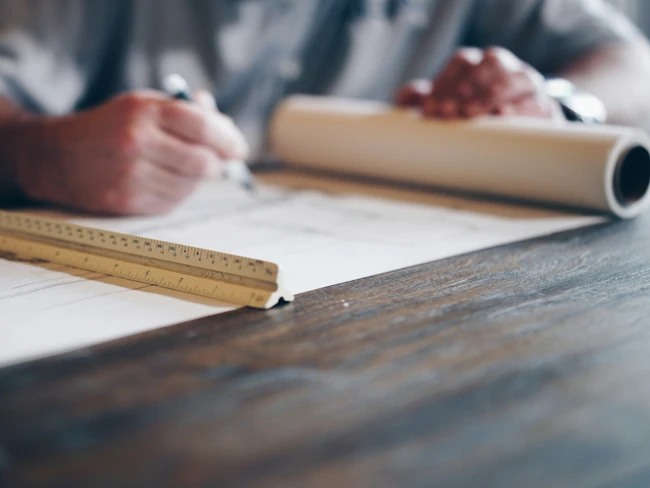
When planning a renovation, extension, or new build in Sydney, understanding the Development Application (DA) process is critical. A DA ensures your project complies with local planning regulations, environmental considerations, and zoning laws. While it may seem daunting at first, being informed and prepared can make the process much smoother. This guide provides a comprehensive breakdown of what to expect at every stage.
What is a Development Application (DA)?
A Development Application (DA) is a formal request to your local council for permission to carry out development work. This process applies to projects such as major renovations, extensions, or building new structures.
Do All Projects Require a DA?
Not necessarily. Some works may qualify for:
- Exempt Development: Certain small-scale projects, like garden sheds or fences, might not require approval if they meet specific size, location, and design standards under State Environmental Planning Policies (SEPP).
- Complying Development Certificate (CDC): For straightforward projects that meet the lot requirements and state regulations, a CDC offers a faster approval pathway. However, projects in heritage zones or those that don’t meet standard controls typically require a DA.
Steps in the DA Approval Process
1. Preparing Your Application
Proper preparation is crucial for a smooth approval process. Key documents typically include:
- Architectural Plans: Detailed site and house plans drawn to scale. These include floor plans, elevations, and sections.
- Statement of Environmental Effects (SEE): Describes how the project complies with council regulations and addresses potential impacts like overshadowing, noise, or privacy concerns.
- BASIX Certificate: Confirms your project meets NSW energy and water efficiency standards.
- Heritage Reports: Required for properties in heritage zones.
- Specialist Studies: Such as flood or bushfire assessments, depending on your site.
- Survey Plan: Detailed site survey indicating the existing structures on site, trees, neighbours, boundary locations and land contours.
These documents must align with the council's Local Environmental Plan (LEP) and Development Control Plan (DCP). The LEP governs zoning and land use, while the DCP provides detailed design and development guidelines specific to your council.
2. Pre-Lodgement Meeting (Optional)
Also known as a pre-DA meeting, this is an opportunity to discuss your proposal with council planning staff before officially lodging your application. While optional, it’s especially beneficial if:
- Your project is in a grey area or does not align perfectly with council controls.
- The property is heritage-listed or located in a conservation area.
- You anticipate complex design or zoning issues.
The meeting can help identify potential concerns early, saving time and money during the formal assessment process. Most council's will offer this service for a fee, and either provide a meeting then formal written feedback, or skip the meeting and simply provide the written feedback.
3. Lodging the Application
All Development Applications in NSW must be lodged via the NSW Planning Portal, a centralized online platform. This step involves:
- Uploading your documentation.
- Paying the required fees.
- Tracking the progress of your application.
Ensure every document is complete and correctly formatted to avoid delays.
4. Public Notification and Consultation
Once submitted, the council will notify neighbors and other stakeholders about your proposed development.
- Notification methods include letters, notices on the property, or advertisements.
- Neighbors have an opportunity to provide feedback or lodge objections, particularly if the project affects their property’s privacy, views, or sunlight.
Being proactive and transparent with neighbors before this stage can help mitigate conflicts.
5. Requests for Information (RFI)
During the assessment, the council may issue a Request for Information (RFI) if additional details are needed to evaluate your application. Common RFIs include requests for:
- Clarification on design aspects.
- Additional reports (e.g., arborist or traffic studies).
- Modifications to ensure compliance with planning controls.
- Addressing neighbour concerns.
Responding promptly to RFIs is critical to avoid delays.
6. Assessment by the Council
The council will review your application against its LEP, DCP, and any other relevant policies. Key aspects they assess include:
- Zoning compliance.
- Environmental impacts (e.g., flooding, bushfire risks).
- Design suitability, including neighborhood character and streetscape.
- Impacts on neighbouring dwellings including overshadowing, view sharing and privacy.
If your application doesn’t align perfectly with council guidelines, it may still be approved if sufficient justification is provided.
7. Approval or Refusal
Once the assessment is complete, the council will either:
- Approve the DA: Approval typically includes conditions of consent, such as specific design changes, construction hours, or stormwater management requirements.
- Refuse the DA: Refusal is often due to non-compliance with council controls or unresolved objections.
In some cases, the council may issue a deferred commencement approval, allowing you to proceed once specific conditions (e.g., obtaining additional reports) are met.
8. Post-Approval Requirements
Receiving DA approval is a significant milestone, but construction cannot begin until you obtain a Construction Certificate (CC). The CC ensures your plans comply with the Building Code of Australia (BCA) and other technical requirements.
How Long Does the DA Process Take?
Processing times vary, but on average:
- Simple DAs: 6–8 weeks.
- Complex DAs: Several months, especially if public objections or RFIs arise.
Tips for a Smooth DA Process
- Work with Professionals: A skilled building designer can ensure your plans align with council requirements and minimize RFIs or objections.
- Communicate with Neighbors: Early engagement can help mitigate potential conflicts.
- Be Patient: Build flexibility into your timeline to account for unexpected delays.
Final Thoughts
The Development Application process is an essential part of many Sydney renovation and construction projects. While it involves multiple steps and careful preparation, the right guidance can make it manageable and rewarding.
At Banksia Building Design, we specialize in navigating the intricacies of Sydney councils, helping homeowners bring their visions to life while meeting all planning requirements. Learn more about our services here or contact us today to get started!










.webp)








